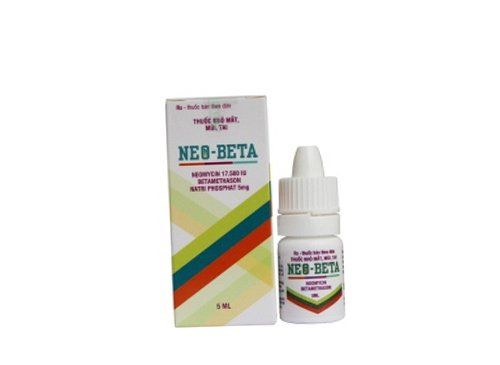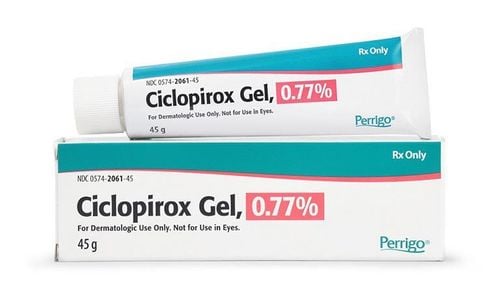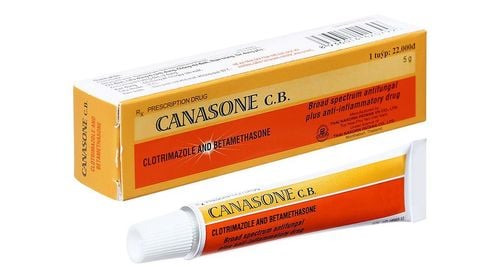This is an automatically translated article.
Wynzora is a drug used to treat psoriasis, the drug has the main ingredients betamethasone and calcipotriene, content 0.005% / 0.064%, is prepared in the form of skin cream, packed in tubes of 60 grams. Detailed information of the drug Wynzora is presented in the article below.1. What is Wynzora?
Wynzora drug has the main ingredients betamethasone and calcipotriene, is made in the form of a topical cream, each gram of Wynzora cream contains 50mcg calcipotriene and 0.644 mg betamethasone dipropionate, packaged 60g/tube/box. How Wynzora works: Betamethasone is a corticosteroid, it helps to reduce redness, pain, itching, swelling or other discomfort caused by skin disease. Calcipotriene is a form of Vitamin D that works by slowing the growth of skin cells so they don't build up into thick and scaly patches of skin.2. What does Wynzora do?
Wynzora is used for the topical treatment of plaque psoriasis.3. How to use Wynzora
Use Wynzora only as directed by your doctor. Do not use more Wynzora, more often, and do not use Wynzora for longer than directed by your doctor. Wynzora should only be used on the skin. Do not let Wynzora get in your eyes, nose, mouth, or vagina, or apply it to your face, underarms, or groin area. Do not use Wynzora on skin with cuts or scrapes. If Wynzora gets in these areas, rinse immediately with water. Do not use Wynzora at the same time as other topical medications. Wash your hands with soap and water before and after using Wynzora. Apply a thin layer of Wynzora to the affected area and massage gently. Do not use Wynzora cream for more than 8 weeks unless your doctor has told you to. Do not cover skin treated with Wynzora unless your doctor tells you to.4. Dosage of the drug Wynzora
The dosage of Wynzora will vary from patient to patient. The daily dose of Wynzora, the time between doses, and the time to take the drug varies based on your doctor's prescription. Apply Wynzora to the affected area once a day for up to 8 weeks or until the area heals. Do not use more than 100 grams per week.If you miss a dose of Wynzora: If you miss a dose of Wynzora, take it as soon as possible. If it is almost time for your next dose, skip the missed dose of Wynzora, then take it as usual.
5. Contraindications of the drug Wynzora
Wynzora should not be used by anyone who is allergic to betamethasone or calcipotriene or to any of its ingredients.6. Notes when using Wynzora
Tell your doctor if you have a history of allergies or any unusual or allergic reaction to Wynzora or any other medicines. This medicine should not be used to treat certain types of skin infections or other skin conditions such as severe burns. For children: There are no studies on the effects of Wynzora in children. Elderly: Studies have shown that the effectiveness of Wynzora is not restricted to this population. However, elderly patients are more sensitive to the effects of Wynzora than younger patients. During pregnancy, Wynzora should be used only when clearly needed. Weigh the risks and benefits of taking Wynzora with your doctor. While breast-feeding: There are no adequate studies in women to determine the risk to the infant when Wynzora is used during breast-feeding. The potential benefits and risks should be weighed before using Wynzora in this situation. Wynzora should not be applied directly to the nipples and areola. Tell your doctor if you have any of these conditions, especially of: Cushing's syndrome, diabetes, glaucoma, high blood sugar, intracranial hypertension, cataracts. Wynzora should be used with caution in patients with the following conditions: erythrodermic psoriasis (redness), exfoliative (peeling) or pustular (purulent) psoriasis; hypercalcemia, hypercalciuria, kidney disease, liver disease; large sores, infections, severe skin wounds at the site of application; liver failure, as the risk of side effects may be increased. Blood, urine, and other tests should be done to check for unwanted effects. If your psoriasis doesn't improve within a few weeks of taking Wynzora or gets worse, see your doctor. Using too much Wynzora or using it for a long time can increase your risk of adrenal gland problems. Tell your doctor if you have any of the following: Darkening of the skin, diarrhea, dizziness, fainting, loss of appetite, mental weakness, nausea, skin rash, fatigue, weakness, vomiting. Wynzora can cause hypercalcemia, hypercalciuria. Tell your doctor if you have: stomach pain, confusion, constipation, depression, dry mouth, headache, incoherence, increased urination, loss of appetite, muscle weakness, nausea, thirst, fatigue, vomiting, weight loss. Stop the medicine and tell your doctor right away if your skin blisters, burns, dries, peels, itch, scabs, severe redness, soreness, or swelling. Wynzora may make your skin more sensitive to sunlight. Use sunscreen and wear protective clothing when you are out in the sun. Do not use skin care products or cosmetics on the treated skin area. Wynzora may cause vision problems, including an increased risk of cataracts and glaucoma. Wynzora may be absorbed from the skin into the bloodstream. This can lead to unwanted effects of corticosteroids. These side effects are more likely to occur in children and in people using Wynzora for a long time or over large areas of skin. If you have a skin infection other than psoriasis (such as a bacterial skin infection, chickenpox, herpes simplex), you should have it treated before you start taking this medicine. Because Betamethasone and other corticosteroid drugs can decrease your body's response, it can be more difficult to treat. Although unlikely, Wynzora may temporarily slow a child's growth if used for a long time. Have your child have his or her height checked regularly. Wynzora may cause reversible hypothalamic-pituitary-adrenal (HPA) axis suppression with clinical potential for glucocorticosteroid insufficiency. This may occur during treatment or when treatment is stopped. Evaluation of HPA axis suppression can be done using the adrenocorticotropic hormone (ACTH) test. If HPA axis suppression is noted, gradually reduce Wynzora dose, reduce frequency of use, or substitute with a less potent corticosteroid.7. Side effects of the drug Wynzora
Wynzora may cause some unwanted effects. Some side effects of Wynzora can occur but are usually mild, occur at the site of administration, and may go away on their own during treatment.Common side effects:
Itching, pain at the injection site Skin irritation, thinning, skin rash, dry skin Burning sensation, skin redness, scaling, itchy skin, pus at the hairline Side effects Rare:
Body aches, cough, sore throat, chills, fever, stuffy nose, runny nose Diarrhea, difficulty breathing, dark skin Tinnitus , headache, joint pain, muscle pain, trouble sleeping Nausea, vomiting, loss of appetite, fatigue, weakness Blurred vision, eye pain, decreased vision Burns, itchy skin with red blisters the size of needles Bruising, large, flat, blue or colored patches appearing purple red lines appear on the arms, face, legs, trunk or groin red and scaly around the mouth red and purple lines appear on the arms, face, legs, trunk or groin Red and scaly around the mouth
8. Wynzora drug interactions
While taking Wynzora, it is most important for your doctor to know if you are taking any other medicines. Some products that may interact with Wynzora include: other corticosteroids (e.g., prednisone, hydrocortisone), other products containing calcipotriene (calcipotriol). Do not use Wynzora with any of the following medicines: Alcuronium, Aspirin, Atracurium, Auranofin, Fosphenytoin, Gallamine, Hexafluorenium, Metocurine, Phenobarbital, Phenytoin, Primidone, Rifampin, Rifapentine. Because they can increase your risk of some side effects, sometimes using both drugs can be the best treatment for you. Using alcohol, beer, or tobacco while using Wynzora can also cause interactions.9. Storage of Wynzora
Store Wynzora in an airtight container, at room temperature, away from high temperature, humidity and direct light. Do not freeze the Wynzora potion, do not throw it in the fire. Use Wynzora within 6 months of opening.Wynzora is a medication used to treat plaque psoriasis. Because Wynzora contains corticosteroids, the use of the drug needs to be careful, do not abuse the drug and follow the instructions of a medical professional. Contact your doctor immediately if you have questions about Wynzora.
Please dial HOTLINE for more information or register for an appointment HERE. Download MyVinmec app to make appointments faster and to manage your bookings easily.













